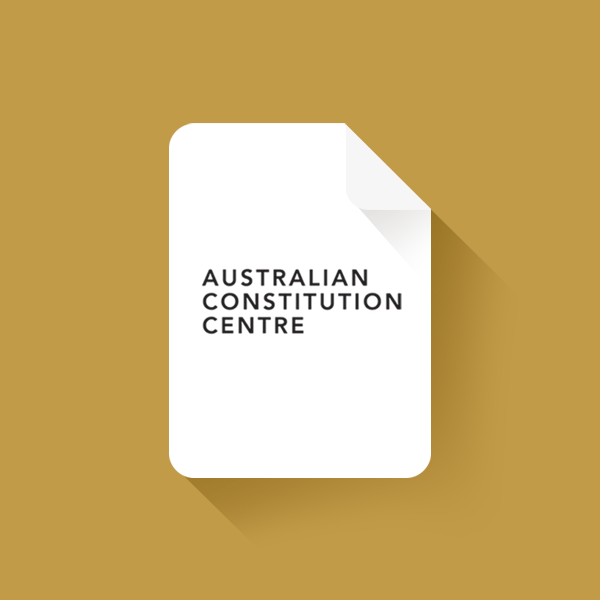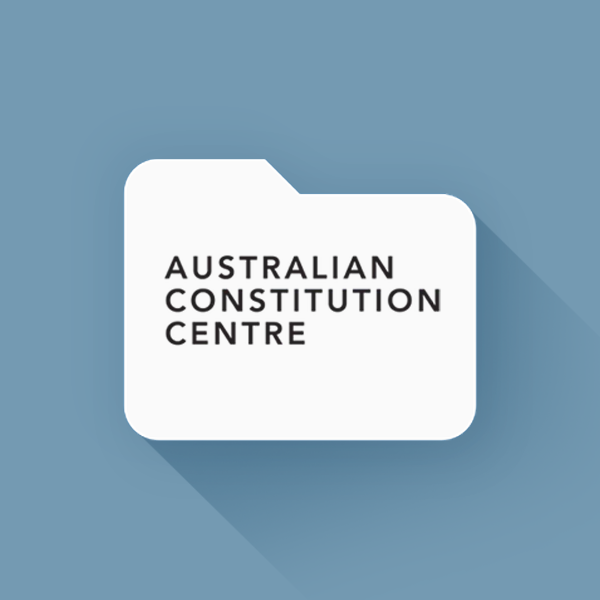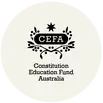Australian Constitution Centre Resources
Stage 2 C&C New School Resources
Unit 01: Rules and Laws in Australia today – Year 4
Unit 1: Rules and Laws in Australia today – Year 4 – Civics and Citizenship (C & C)
Strand: Laws and Citizens
Topic 4.1: The difference between rules and laws and why laws apply to everyone in our society
Unit 02: How British laws and principles, including the rule of law, were brought to Australia by the First Fleet in 1788 and their impact on Aboriginal and Torres Strait Islander peoples - Year 4
Unit 2: How British laws and principles, including the rule of law, were brought to Australia by the First Fleet in 1788 and their impact on Aboriginal and Torres Strait Islander peoples – Year 4 - Civics and Citizenship (C & C) Strand: Laws and Citizens
Topic 4.2: A conflict of laws and perspectives
Unit 03: The introduction of responsible and representative government in colonial Australia – Year 5
Unit 3: The introduction of responsible and representative government in colonial Australia – Year 5 - C & C Strand: Citizenship, Identity & Diversity
Topic 5.1: The colonies introduce Responsible and Representative Government and the impact on Aboriginal and Torres Strait Islander peoples
Unit 04: Representative Democracy. The story of voting rights in Australia including for Aboriginal and Torres Strait Islander people and women - Year 5
Unit 4: Representative Democracy. The story of voting rights in Australia including for Aboriginal and Torres Strait Islander people and women –
Year 5 - C & C Strand: Government & Democracy
Topic 5.2: The Constitution and the right to vote in Australia
Unit 05: Australian identity, federation and the Constitution including the intentions of the framers – Year 6
Unit 5: Australian identity, federation and the Constitution including the intentions of the framers – Year 6 - Civics and Citizenship (C & C) Strand:
Citizenship, Identity & Diversity
Topic 6.1: How and why the Australian Constitution came to be
Resource


01. Index and introduction
Australian identity, federation and the Constitution including the intentions of the framers
Resource


03. Lessons 1,2 &3: Framers, Writers of the Constitution
Lessons 1,2, 3: ‘Meet the Makers’: Framers and writers of the Australian Constitution: Discover their role and ideas and
contributions through the second half of the nineteenth century
Unit 06: The Constitution, Federalism and Westminster System – Year 6
Unit 6: The Constitution, Federalism and Westminster System – Year 6 - Civics and Citizenship (C & C) Strand: Government & Democracy
Topic 6.2: Introducing different elements in the Australian Constitution, Westminster influences, and the covering clauses and Preamble.
Resource


02. TRD 49-50 and Lesson 1-2
What is a Constitution and Why is it Binding? (Student Resource)
Resource


03. TRD 51 and Lesson 3
Comparing the Constitution-making process with the United Kingdom and the United States
Unit 07: The Australian Constitution and its three key institutions of government and how the Separation of Powers (SoP) protects democracy and the people – Years 6 and 7
Unit 7: The Australian Constitution and its three key institutions of government and how the Separation of Powers (SoP) protects democracy and the people – Years 6 and 7 - C & C Strand: Government & Democracy
Topic 6.3 & 7.1: The Australian Constitution and its three Key Institutions of Government
Resource


01. Index and introduction
The Australian Constitution and its three key institutions of government and how the Separation of Powers (SoP) protects democracy and the people
Resource


02. TRD 56 and Lesson 1-2
Separation of Powers – Overview: the three institutions or branches of government: SoP Overview
Resource


03. TRD 57 and Lesson 3
Introducing the Australian Parliament: The Houses of the Parliament (Student Resource)
Resource


06. TRD 60 and Lesson 7
Executive Power Overview including the position and roles of who makes up the Executive Government
Resource


08. TRD 62 and Lesson 9
Executive power – the powers and role of the Governor-General, from cutting ribbons to dismissing governments
Unit 08: Australia’s legal system, the Courts and the Australian Justice System – Years 7 & 9
Unit 8: Australia’s legal system, the Courts and the Australian Justice System – Years 7&9 - Strand: Laws & Citizens
Topics 7.2 & 9.4: Key features of Government & the Australian Justice System: Separation of Powers and the Judiciary
Resource


01. Index and introduction
Australia’s legal system, the Courts and the Australian Justice System
Resource


02. TRD 66-69 and Lesson 1
The Separation of Powers – protecting the independence of the Judiciary (student resource)
Unit 09: The Constitution and the Making of Law in Australia – Year 8
Unit 9: The Constitution and the Making of Law in Australia – Year 8 - C & C Strand: Laws & Citizens
Topic 8.1: The making of law in Australia
Resource


03. TRD 75-79 and Lesson 2
TRD 75 Delegated Legislation
TRD 76 Case Study - Delegated legislation and the 2021 India travel ban
TRD 77 Emergency Powers and Common Law Freedoms
TRD 78 Statutes – How Are They Made?
TRD 79 Powers of the Australian Defence Force (ADF) in Natural Disasters and Pandemics
Topic 8.1: The making of law in Australia
Unit 10: Rights and freedoms in the Australian Constitution – Year 8
Unit 10: Rights and freedoms in the Australian Constitution – Year 8 - C & C Strand: Citizenship, Identity & Diversity
Topic 8.2: Rights and Freedoms in the Australian Constitution
Unit 11: Changing the Constitution (referenda) – Year 9
Unit 11: Changing the Constitution (referenda) – Year 9 - C & C Strand: Government & Democracy
Topic 9.1: Referendum: the process for Constitutional change
Unit 12: Federalism v Westminster - Year 9
Unit 12: Federalism v Westminster Year 9 - C & C Strand: Laws & Citizens
Topic 9.2: Federalism v Westminster
Resource


03. TRD 104-106 and Lesson 2
Federalism - What topics can the Commonwealth legislate about?
Resource


04. TRD 107-108 and Lesson 3
Federalism - When is Discrimination Against States or Their Residents Prohibited?
Unit 13: Women’s voting rights under the Australian Constitution – Year 9
Unit 13: Women’s voting rights under the Australian Constitution – Year 9 - C & C Strand: Citizenship, Identity & Diversity
Topic 9.3: Women’s voting rights under the Australian Constitution
Unit 14: The High Court and Constitutional Interpretation – Year 10
Unit 14: The High Court and Constitutional Interpretation – Year 10 – C & C Strand: Laws & Citizens
Topic 10.1: The High Court and Constitutional Interpretation
Unit 15: The rights of Aboriginal and Torres Strait Islander peoples in Australia – Year 10
Unit 15: The rights of Aboriginal and Torres Strait Islander peoples in Australia – Year 10
C & C Strand: Citizenship, Identity & Diversity
Topic 10.2: Indigenous Rights and the Australian Constitution
Stage 1 Resources
Folder


The Principles in detail PDF files
Folder


Biographies of the Chief Justices of the High Court
Folder


High Court Case Studies
Folder


Topics of interest
Folder


Australia’s levels of Government PDF poster
Folder


Worksheets for onsite visits to the Exhibition at the High Court of Australia, Canberra.


